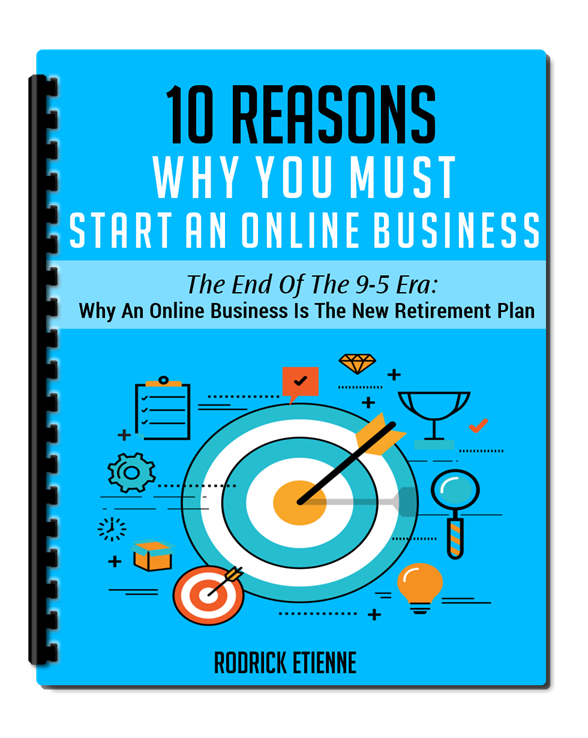If you’ve ever dreamed about building a business that lets you work from anywhere, writing and…
11 Mistakes To Avoid When Creating Your First E-Book

Creating your first e-book is an exciting opportunity to share your knowledge, build your brand, and connect with your audience on a deeper level.
However, the process requires careful planning and attention to detail to ensure your finished product resonates with readers and achieves your goals.
From conceptualizing your idea to refining your content, every step matters. Avoiding common pitfalls can save you time, frustration, and missed opportunities, setting the stage for a successful launch.
Whether you’re new to writing or simply exploring this format for the first time, understanding where things often go wrong is key.
Stay with us as we break down the 11 mistakes to avoid so you can create an e-book that stands out and delivers real value.
1)) Skipping Audience Research
Understanding your audience is the foundation of any successful e-book. Without knowing who your readers are, what they care about, and the problems they need solved, your content may fail to resonate.
Take the time to dig deep into the preferences, challenges, and goals of your target readers.
This research not only helps you tailor your tone and structure but also ensures that the information you provide aligns with their expectations and needs.
Crafting your e-book around a well-defined audience will make a stronger impact, build trust, and ultimately keep your readers engaged from start to finish.
2)) Weak Or No Outline
Creating a clear and thorough outline is crucial when developing your first e-book, as it serves as the foundation for your content and ensures your ideas are well-organized.
Without a solid structure, your e-book may lack flow and coherence, leaving readers confused or disengaged.
An effective outline helps you map out the main topics, subtopics, and key points, providing a logical progression that guides your audience through the material.
It also saves time during the writing process, as you’ll already have a blueprint to follow, reducing the likelihood of unnecessary revisions.
A well-structured outline keeps your content aligned with your goals and ensures that every section contributes meaningfully to the overall message of your e-book.
3)) Poor Content Quality
Poor content quality can significantly hinder the success of your first e-book. Readers expect value, clarity, and engaging material that resonates with their interests or needs.
Failing to provide well-researched information, cohesive arguments, or a compelling narrative can cause frustration and prompt them to abandon your book altogether.
It’s crucial to focus on delivering accurate facts, polished writing, and a tone that suits your target audience. Pay attention to grammar, punctuation, and formatting to enhance readability.
Taking the time to edit and refine each section ensures your e-book stands out, captures the interest of your readers, and motivates them to keep reading until the very end.
4)) Neglecting Design And Layout
Design and layout play a crucial role in the success of your e-book, as they directly influence the reading experience and overall appeal.
A visually unappealing or poorly structured e-book can deter readers, regardless of the quality of its content.
To capture and maintain their attention, ensure that your e-book is well-organized with consistent fonts, spacing, and color schemes that reflect your theme or branding.
Using headings, bullet points, and visuals like images or charts can help break up large blocks of text, making it easier to digest.
An effective design enhances the reader’s engagement and conveys professionalism, leaving a lasting positive impression.
5)) Lack Of Consistent Branding
Consistency in branding is essential when crafting your first e-book, as it helps establish credibility and fosters recognition among your audience.
Every element, from the color scheme and typography to the tone of voice and logo placement, should align with your overall brand identity.
A cohesive design ensures that readers associate the content with your brand, reinforcing trust and professionalism.
Without this alignment, the e-book may appear disjointed or unprofessional, potentially confusing readers and diminishing its impact.
Paying attention to these details not only enhances the readability and visual appeal of your e-book but also strengthens the connection between your audience and your brand’s core message.
6)) Ignoring Editing And Proofreading
One of the critical steps in crafting a high-quality e-book is ensuring thorough editing and proofreading.
Neglecting this stage can lead to errors, inconsistencies, and a lack of professional polish that can detract from the reader’s experience.
Careful editing helps refine the structure, clarity, and tone, ensuring that your ideas are conveyed effectively and remain engaging.
Proofreading, on the other hand, focuses on catching grammar, spelling, and punctuation mistakes that could otherwise undermine the credibility and professionalism of your e-book.
Taking the time to perfect these final touches not only enhances the overall quality of your work but also builds trust with your audience, as they come to regard your content as reliable and well-prepared.
7)) Overloading With Dense Text
When designing your first e-book, it is essential to consider the readability of your content. Overwhelming readers with large blocks of dense text can make the material feel intimidating and difficult to engage with.
Instead, break up the information into manageable sections, using headings, subheadings, bullet points, and visual elements such as images or charts to guide the reader.
Clear and concise language helps maintain focus and ensures your message is effectively conveyed.
Spacing and formatting play an equally important role, as they create a visually appealing layout that holds the reader’s attention.
Always strive to balance informative content with an accessible and inviting presentation, making the reading experience enjoyable and productive.
8)) Failing To Provide Value
Failing to deliver value is one of the most critical errors when crafting an e-book. Readers invest their time and, often, money with the expectation of gaining knowledge, insights, or solutions that will benefit them.
To ensure your e-book resonates, focus on thoroughly addressing the needs and concerns of your audience through well-researched content and actionable takeaways.
Depth and clarity are key in providing readers with meaningful information that adds to their understanding or skill set.
By tailoring your e-book to solve real problems or answer pressing questions, you establish credibility and encourage readers to continue exploring your work.
Delivering value creates a connection with your audience that fosters trust and long-term engagement.
9)) No Clear Call-To-Action
A clear call-to-action (CTA) is essential when creating your first e-book because it guides readers on what to do next, ensuring they remain engaged beyond the final page.
Without a well-defined CTA, readers may enjoy your content but fail to take any subsequent steps, leaving the connection incomplete.
This can mean missing out on opportunities to grow your email list, encourage social media interactions, or promote related products or services.
To craft an effective call-to-action, consider the primary goal of your e-book—whether it’s to drive readership towards a specific service or inspire them to explore related content—and use language that is persuasive and action-oriented.
Ensure your CTA stands out visually and is placed strategically within your e-book, so readers cannot miss it.
Providing this direction adds value to your e-book while helping you achieve your broader objectives.
10)) Insufficient Marketing Strategy
One of the most common pitfalls when creating your first e-book is neglecting to develop a comprehensive marketing strategy.
It’s not enough to focus solely on writing valuable content; you also need to plan how your e-book will be discovered by your target audience.
This includes identifying the channels where your audience is most active, crafting tailored messaging to capture their interest, and timing your promotional efforts for maximum impact.
A strong strategy may involve leveraging social media platforms, collaborating with influencers, building an email list, or using targeted advertisements to drive traffic.
Without a well-thought-out approach, even the most well-written e-book risks remaining unseen or underappreciated, which could undermine the effort and dedication that went into creating it.
11)) Unrealistic Deadlines
Setting unrealistic deadlines can significantly hamper the process of creating your first e-book. Crafting a high-quality e-book demands a considerable amount of time for research, writing, editing, and designing.
Rushing through any of these stages often compromises the final product, resulting in errors, inconsistencies, or subpar content.
Taking the time to plan a realistic timeline allows for thorough review and refinement of your ideas, ensuring that your e-book meets the standards you envision.
A well-paced schedule also reduces stress, fosters creativity, and makes room for unforeseen challenges that might arise during the production process.
By respecting the time it takes to create a compelling e-book, you can produce a resource that is polished, valuable, and impactful for your readers.
Conclusion
Creating your first e-book is an exciting yet intricate process that requires careful planning, creativity, and attention to detail.
By steering clear of the common mistakes outlined in this article, you set yourself up for a smoother, more rewarding experience.
Each decision you make—from your topic and audience research to the final stages of editing and promotion—can significantly impact the success of your e-book.
Mistakes such as neglecting proofreading, skipping an engaging design, or failing to strategize your marketing can diminish the overall potential of your hard work.
However, by taking the time to refine your content, seek feedback, and remain adaptable throughout the process, you can create an e-book that not only resonates with your audience but also establishes your credibility and authority in your field.
Patience and diligence are key, as high-quality e-books often pave the way for long-term benefits such as brand growth, leadership, and lasting connections with your readers.
Focus on delivering value, avoid the pitfalls mentioned, and you’ll be well on your way to crafting a memorable and impactful e-book that stands out in any marketplace.





